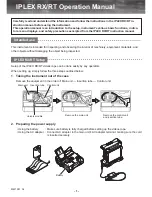
2
CAUTION
!
WARNING
!
Your Kestrel Weather/Environmental Meter is designed to provide accurate
measurement of current conditions only. Depending on your location and
environment, conditions may change rapidly.
Rapid temperature and humidity changes (i.e., moving your meter from indoors to outdoors) may cause inaccurate readings of
temperature and humidity as well as all readings that rely on either of these values. Before relying on readings from your Kestrel Meter, be
sure to either a) force air flow over the sensors by waving or slinging your meter through the air; or b) wait until your unit’s readings have
stabilized, indicating it has equilibrated to its new environment.
To maximize the accuracy and reliability of your readings:
• Ensure that your Kestrel Meter is in good repair and within factory calibration.
• Take readings frequently and carefully according to the guidelines above.
• Allow your meter’s readings to stabilize after significant changes in temperature or humidity (i.e., changing location from indoors
to outdoors).
• Allow a margin of safety for changing conditions and reading errors (2-3% of reading is recommended).
Use care and good judgment when referring to your Kestrel Meter to make any decisions regarding safety,
health or property protection.
To reduce the risk of injury or death to persons, read and follow these guidelines!
Your Kestrel Weather/Environmental Weather Meter may provide one or more of these measurements relating to estimation of danger of
injury to people or animals from heat or cold: Heat Stress Index, Wind Chill Index, Wet Bulb Globe Temperature (“WBGT”), Thermal Work
Limit (“TWL”). Note that guidance tables based on these values are based on typical physiological response. Certain individuals or animals
may be more susceptible to harm relating to environmental conditions and require additional precautions. For example, very young or
elderly individuals, individuals with asthma, and individuals who have not become acclimatized to hot conditions are likely to be more
prone to heat injury.
• Know yourself and the individuals and items you are responsible for.
• Where appropriate, seek the guidance of a medical professional.
• Know what to do in the event of heat or cold injury and be prepared with supplies.
• In the case of heat illness, remember the rule – “Cool first, transport second.” An inexpensive ice bath can mean the difference
between life and death.
Your Kestrel Weather/Environmental Meter is not a medical device. It is only one source of information and
must be employed with care and good judgment.



































